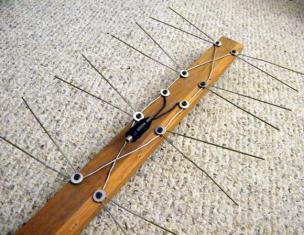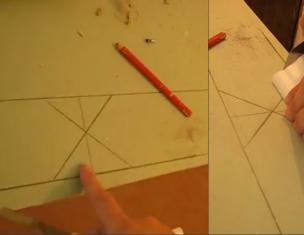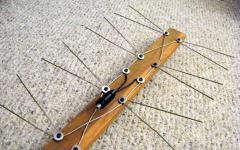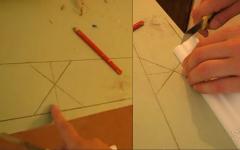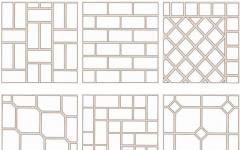Repair specialists were divided on how to putty drywall. Some argue that the full putty of drywall sheets is meaningless, while others strongly recommend that the entire surface be treated before finishing. Both opinions have a place to be, but the choice of a solution depends on whether paint is applied to the wall, tiles are laid, or wallpaper is supposed to be pasted. Before painting the wall, puttying must be done without fail, since any paint will emphasize the smallest roughness of the drywall. In the case of dense wallpaper or tiles, you can get by with a starting putty, but only if the surface of the walls does not have significant defects.
The main criterion for choosing putty for drywall is the composition of the mixture, which is made on the basis of gypsum, cement and polymers. When choosing a mixture, it is necessary to take into account the type of room in which the finishing work is performed, and the operating conditions.

- Gypsum-based putty. It has a fine-grained structure, therefore it is often used for finishing puttying. The use of this material in wet areas is not recommended, since gypsum absorbs moisture well, which cannot be prevented even with a primer.
- cement mixture. In places with a high index of humidity, this composition is considered the most optimal, due to its resistance to moisture. In addition, cement provides high strength and durability of the coating. For fine finishing of living rooms, it is better not to use cement putty - it shrinks slightly, as a result of which microcracks appear.
- polymer blend. The polymer-based composition is considered the most plastic, provides a perfectly smooth surface and is better than other mixtures applied to the walls. Polymer putty is sold ready-made, so there is no need to pre-mix the components and worry about the correct consistency of the composition. It is also recommended to use an elastic polymer putty for finishing plasterboard ceilings.
Surface preparation for puttying
The question of how to properly putty drywall is considered one of the most popular in many construction forums. Professional finishers say that the quality of the finish coat largely depends on the proper preparation of the walls for puttying, so the following steps must be taken before starting work:
- Thoroughly clean the base of the wall from grease, dust and dirt after installation work. At this stage, it is necessary to eliminate the remnants of the old finish, wallpaper and peeling paint, for this you can use sandpaper.
- Check the screws for strength. If the self-tapping screws protrude above the wall surface and cling to the spatula, they must be screwed tightly inward to create the most even working area.
Important! It is better if the screws are recessed as much as possible in drywall sheets. But it happens when they are twisted too deeply, then they need to be unscrewed, and new self-tapping screws should be screwed next, and then the holes should be puttied.
- Treat the cleaned surface with a primer, which will significantly improve adhesion, and the putty in this case will more reliably adhere to the surface. In order for the primer mixture to dry, it is necessary to wait about a day, only after that you can start puttying.

Features of putty for wallpapering
In order for the appearance of walls and ceilings after finishing to suit you completely, it is necessary to putty drywall, paying attention to all the nuances of working with this material. The processing of a plasterboard surface before wallpapering has its own characteristics. For thick and massive wallpaper, it is best to choose mixtures with a coarse-grained structure, the surface will be slightly rough, which will greatly facilitate further pasting. Finishing puttying in this case can be omitted, since thick wallpapers will mask all minor defects on their own, but you still can’t do without starting putty. For thin paper wallpapers, finishing puttying is necessary, otherwise all drywall defects will appear immediately after drying.
 The choice of putty mixture and the method of its application (number of layers) depends on the type of wallpaper pasted on the walls
The choice of putty mixture and the method of its application (number of layers) depends on the type of wallpaper pasted on the walls Some finishers putty only the joints of drywall sheets, but this is not recommended. It is necessary to putty the entire surface of the walls, otherwise all areas on which the putty was applied will stand out significantly both in daylight and in artificial light.
Puttying for painting
The preparation of a drywall wall before painting is carried out according to the same technology as for wallpapering, the main thing is that the surface is even, without potholes and cracks.
So that the layers of the base and finishing putty do not crack or peel off, a reinforcing mesh is mounted on the dried surface before starting work. After painting, all the flaws of the wall will be clearly visible, especially for light shades. Therefore, all seams between sheets, holes and traces of self-tapping screws are carefully leveled with the base mixture, after which the entire surface is primed.
A primer layer after finishing puttying is necessary so that the paint does not soak into the drywall and the coating does not deform. The joints of drywall sheets without a factory edge should be cut off on their own in order to obtain high-quality reinforcement of the joints.

Advice! The primer should be distributed over the entire surface of the drywall, water-soluble compounds are used as the material, which are absorbed into the upper layers and do not penetrate inside. Moisture-resistant protective shell will effectively prevent paint absorption.
Plastering drywall corners
To obtain the maximum result in a fine finish, all seams, corners and joints must be carefully puttied. Plasterboard corners are puttied according to a special scheme, which involves the following rules:
- Drywall is a fragile material, so you need to work as carefully as possible. For processing external corners, it is recommended to purchase special perforated corners made of plastic or metal, which will smooth out sharp corners and protect them from damage.
- The inner corner must be glued with a sickle, and a separate tape is taken for each side of the joint.
- A thick layer of putty is applied on both sides of the corner joint and pressed into the corner with a corner spatula, after which the excess mixture is removed and another layer is applied.
There is also another technology for puttying corners, in which one side of the corner is first processed according to the standard scheme, and after it dries, the putty is applied to the second side.
Basic puttying technology
The question of how to putty drywall remains one of the most relevant for those who first decided to do repairs. For proper puttying, several spatulas are used - the material is applied with a large one and applied to the walls, small defects on the fresh layer are eliminated with a small rubber tool, hard-to-reach areas are treated with a narrow one, and the putty is leveled at the joints of the walls with an angular one.
The final layer of putty is applied after complete drying of the starting layer, primer and thorough sanding. In this case, the material must be spread in a thin, neat layer up to 2 mm in such a way that a smooth surface is obtained. To do this, each portion of the mixture is applied with smooth overlapping movements, while the spatula must be held at an angle of 30-35 degrees to the wall.

If after the hardening of the finishing putty there are voluminous shells, then it is necessary to apply another layer of the mixture - this is done until the most even plane is formed. The walls to be painted should not be ribbed, so for a better result, experts recommend using a lamp that will help identify all the flaws.
After the putty has dried, all irregularities and flaws are eliminated with zero sandpaper to a state of absolute smoothness. The treated walls must be left for a few days, and after that you can start painting, wallpapering or applying decorative coatings.



